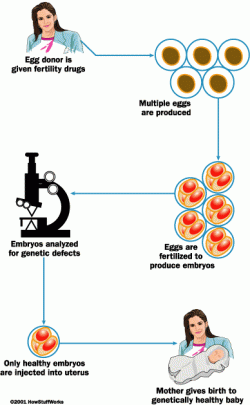EMBRYO SCREENING
The general procedure of gene selection is a screening of each embryo (the fertilised sperm and egg cells) to test for undesired genes, the sex of the baby and any other abnormalities that could potentially lead to a miscarriage. Perhaps the most hotly debated aspect of creating a designer baby is the potential for sex selection and a shift in the odds for diseases and problems.
Nonetheless, the main scientific procedure of embryo screening generally leads to a lowering of the odds, and cannot be said to be 100% certain of a baby’s outcome. There are other ways of choosing the desired genes for babies (like flow cytometry and the gradient method, which involves the use of a centrifuge on sperm which separates the heavier X-chromosomes from the lighter Y-chromosomes) but the IVF related process is called Preimplantation Genetic Diagnosis (or PGD).
PGD involves the analysis of a single embryo to determine its genetic makeup. Once completed, scientists can observe which genes are faulty, by, at the biopsy stage, when there are around eight cells that make up the embryo, inserting a small hole into one and extracting the DNA, which can be examined to test for different combinations of nucleotides to determine which proteins will be made, thus how the baby will develop.

